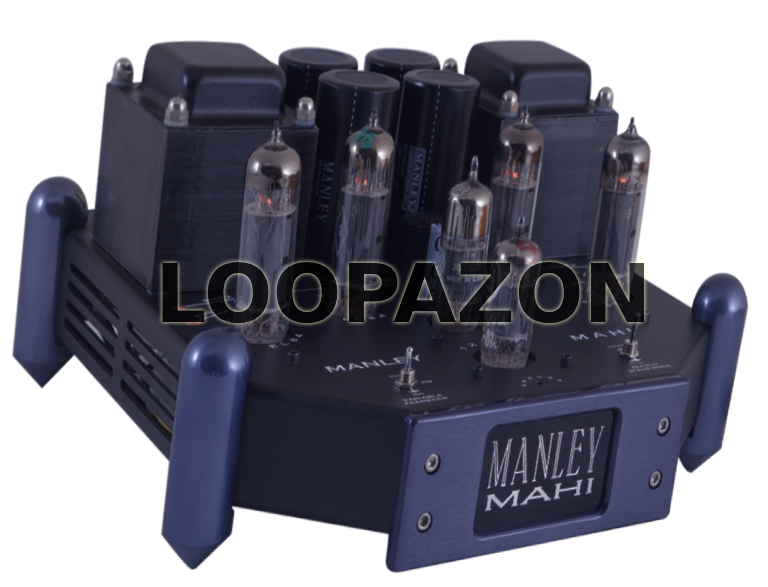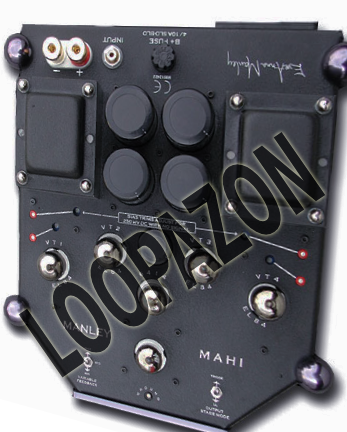Manley MAHI Monoblock Amplifier
Form a band online, promote your music, buy custom beats, sound parts, and share your Beat or Track as a Royalty Free loop with us. Collaborate to make beats online with the best loop makers from around the world on the Forum for musicians and beat makers. Keep up to date with Music News and learn from FL Studio Video Tutorials and the articles on the Blog. Free DAW Music Software downloads, VST and Instrument Packs for FL Studio, Pro Tools, Logic, Ableton, and how to use the most popular free DAW Software, Fruity Loop Plugins, MIDIs and more.
An introduction to the Manley MAHI Monoblock Amplifier
Over the last seven or eight years, Manley Laboratories in Chino, California, has been producing new and updated devices with rather strange audio hardware names. In the early 1990s, the Manley-branded Tiny Triodes were well regarded. The Manley Tiny Triodes received a chassis rebuild in 1993 after the Manley firm broke off from VTL, becoming the Manley 35 wattMonoblocks, and later 50-watt Monoblocks. With hard-wired Triode functioning, the use of Ultra-Linear mode that was powerful was standardized.
When 6414 dual triode and a12AT7EH dual input Triode are used, 40 watts RMS is produced in Ultra-Linear mode. In the TRIODE, around 20 watts are produced. The quartet used is EL84/6BQ5. For many years, the EL84 has become everyone's favorite tube, as it lasts for a long time and is known for its reliability.EI, JJ Tesla, Electro Harmonix, and Sovtek actively produce EL84s. The Manley Output transformer, along with Manley MAHI, plays a significant role together.
The Stingray's new circuitry design modifications were implemented
into the 50 Watt Monoblocks after inventing the Stingray Integrated
amplifier in 1998. Finally, a little amplifier could produce huge
bass. Soon, there was a need to upgrade the original EL84 50-watt
monoblocks both physically and functionally after the arrival of the
wonderful Manley Snappers in 2002.

The chassis is coated with black powder, and the transformers are painted black. The position of the tube, switches, and location of the bias is in white. There are quality RCA inputs and a genuine WBT speaker. They design and construct their own printed circuit boards and spin their own transformers. In triode mode, the Mahi amps are rated at 18-27 watts, depending on the feedback setting. The Mahi's monoblock arrangement is a style statement in and of itself, units on its highest sale. Out of twenty non-integrated tube amplifiers, Thirteen are monoblocks in Class A and Class B on the Stereophile Recommended Components list.
The Mahis are by-product of a Stingray integrated amplifier replacing a more basic 50 Watt Mono variant. Eve Anna claims that the Mahis sound better since they have a little bigger B+ rail capacity and separate channels and use short loudspeakers cable.
Manley's newest production is the Mahi mono amplifiers, which naturally complement the Manley credo, "Tubes Rule." The Mahis are 10"W x 5"H × 11" D and weigh 18 pounds. The speaker binding posts (a single pair of robust WBT five-way jobs) and input jacks (RCA only) are situated in the upper part top of the amplifier, near the rear, and at the back of the transformers. It is simple to connect the speaker wires with this setup. The top of the Mahis is copiously and legibly labeled to show the purpose of each element, finished in a subtle black crackle-touch. Even though Manley Labs sells a wide spectrum of hi-fi equipment, the firm likely does more business with its excellent pro gear. The hi-fi gear from Manley reflects the company's pro-audio roots.
Triode-Ultra Linear mode switching is common on the MAHI, although it was formerly a state-secret option in the 1950s. You may pick either 20 watts of triode operation or the ballsier-er control of 40 some-odd watts of UL operation. The Variable Feedback button on the top deck allows the user to control how much negative feedback is given to the amplifier for sound diversity and improved speaker-to-amplifier communication. With a large bank of 1200uF filter caps, the MAHI's B+ capacity has improved substantially.
The MAHI delivers 180 Joules of storage energy. The output transformer of the MAHI Stingray is the same. The Mahi is characterized by a low level of noise, distortion, negative feedback, and the inherently large dynamic range of tube electronics.
Getting connected to the MAHI
You have to connect all the cables. And then plug in the IEC power cord and the energized power outlet. To prevent your MAHI from magnifying any of your upstream equipment's waking-up noises, switch on all of your upstream devices like sources, preamplifiers, and so on.
Switching on the MAHI
You should turn on the MAHI only after the front-end components are on. You can find the power switch on the rear of the chassis. The rocker switch is present adjacent to the AC power. The power switch was placed far back to keep the loud mains away from the input electronics. If you want to switch on the Mahi, turn the switch away from the power cable, turn it off, and turn towards the power wire. Because the Mahis Wattgate IEC inlets partially obstructed the power switches, turning off the amps was a little tough. The MANLEY MAHI badge illuminates. When the small input tube's heater kicks on, you can notice a flare of light. You should remember that it takes around 45 minutes for the system to attain thermal equilibrium after hearing sounds from the Mahi when using it for the first time.
Power down in the MAHI
As a general guideline, turn on your amplifiers last and turn them off first to avoid amplifying any sounds that may come from source components turning on or off. When the Mahi is not in use, it is also advisable to turn off the power rather than leave it on. This will extend the life of the tube and the system. Under normal circumstances, the tubes should last a thousand hours if the BIAS is checked on a regular basis.
TRIODE vs. UL vs. TETRODE
The MAHI output tubes may be set to either TRIODE or Ultra-Linear operation. First and foremost, we strongly advise that you turn off the amplifier before turning on the switch. When the screen grids are connected to the EL84 plates, it is called a triode. Triode mode is recognized for sounding pleasant and alluring, but it is, unfortunately, a less efficient means of running the output tubes. In Triode, you obtain roughly one-half the power you would in Tetrode. The screen grids are connected to unique taps on the output transformer's primary in Ultra-Linear, also known as "partial triode." These UL taps are positioned between the center and outside anode taps in a unique location. The screen grids are connected directly to the output transformer's center tap B+ in tetrode (or pentode) operation. There is no option provided, but there are many pieces of information about UL. Tetrode mode's sound is rough and less polished than triode mode's, but it's a lot more powerful, and occasionally more power is needed.
What's fantastic about Ultra-Linear is that you get the best results using both, and not only that, it also depends on where the UL taps are placed in the output transformer design. The UL mode will be more triode-like when the UL taps are placed to the outer windings. The closer they are to the central tap, the more Tetrode-like they will become. The ideal balance between the two extremes is for the UL taps on this small amplifier, where you will receive more power pleasant feel. If you wish to compare triode and UL modes, first turn off the amplifier, then on the Triode-UL switch, and then turn it back on.
Variable Feedback of MAHI
In MAHI, some global negative feedback is used. A tiny portion of the output signal is sent back to the input stage from the final speaker outputs. The complete circuit is therefore included in a feedback loop that includes the output transformer and some loudspeaker back-EMF, all 3dB (MIN), 6dB (STD), or 10dB (MAX) of it. With the Variable Feedback switch, you may control how much negative feedback is to be provided. Negative feedback changes the amplifier's slew rate or speed. You can feel free to try out this switch, even when music is played or for a different musical genre. You can also select whatever setting you want.

